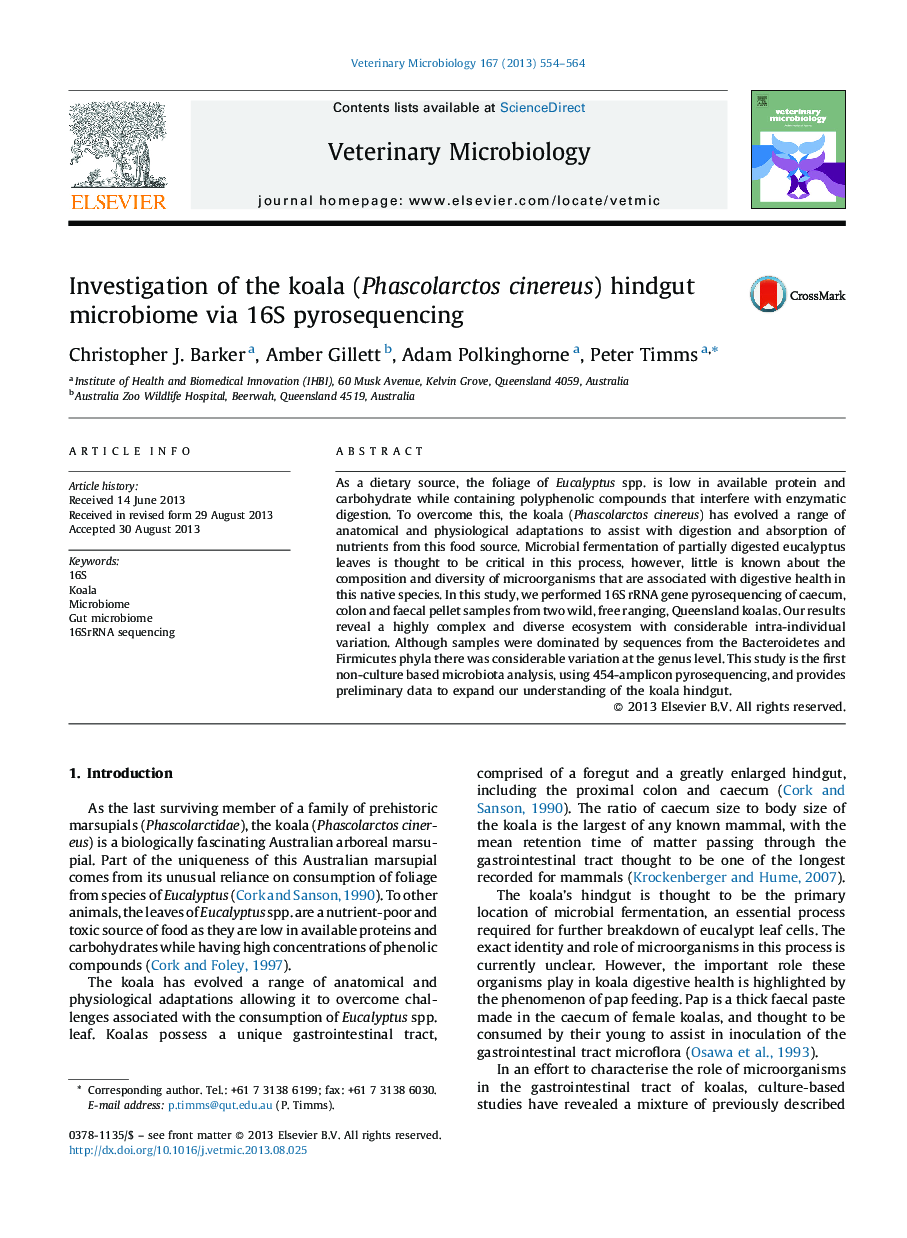| Article ID | Journal | Published Year | Pages | File Type |
|---|---|---|---|---|
| 5800968 | Veterinary Microbiology | 2013 | 11 Pages |
As a dietary source, the foliage of Eucalyptus spp. is low in available protein and carbohydrate while containing polyphenolic compounds that interfere with enzymatic digestion. To overcome this, the koala (Phascolarctos cinereus) has evolved a range of anatomical and physiological adaptations to assist with digestion and absorption of nutrients from this food source. Microbial fermentation of partially digested eucalyptus leaves is thought to be critical in this process, however, little is known about the composition and diversity of microorganisms that are associated with digestive health in this native species. In this study, we performed 16S rRNA gene pyrosequencing of caecum, colon and faecal pellet samples from two wild, free ranging, Queensland koalas. Our results reveal a highly complex and diverse ecosystem with considerable intra-individual variation. Although samples were dominated by sequences from the Bacteroidetes and Firmicutes phyla there was considerable variation at the genus level. This study is the first non-culture based microbiota analysis, using 454-amplicon pyrosequencing, and provides preliminary data to expand our understanding of the koala hindgut.
